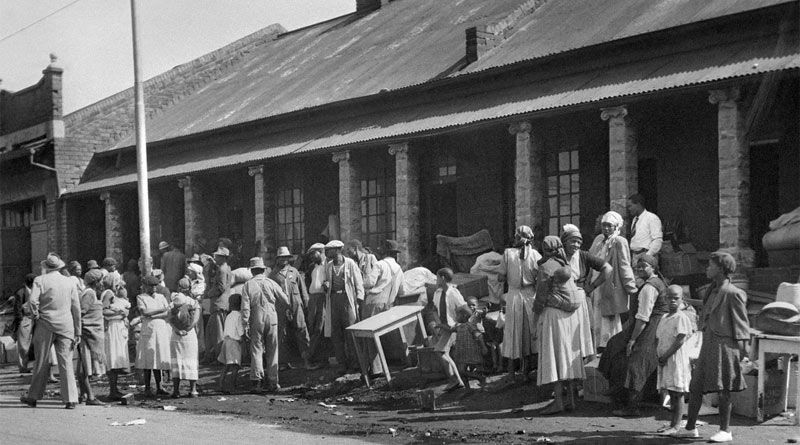Introduction:
The Group Areas Act, a notorious piece of legislation implemented in South Africa during the apartheid era, had far-reaching consequences that continue to shape the nation’s socio-political landscape. This article aims to delve into the historical intricacies of the Group Areas Act by posing 10 critical questions and providing comprehensive answers to unravel the layers of this discriminatory policy.
What was the Group Areas Act, and when was it implemented?
The Group Areas Act was a cornerstone of apartheid legislation enacted in 1950 in South Africa. It aimed to segregate communities based on race, designating specific geographic areas for different racial groups. This legislation officially enforced racial segregation, leading to the forced removal and relocation of non-white populations from areas designated for white residents.
How did the Group Areas Act impact communities?
The Act had profound implications for communities across South Africa. Non-white communities were forcibly displaced from their homes, tearing apart established neighborhoods and uprooting families. This deliberate separation exacerbated existing racial tensions and perpetuated systemic inequality.
Were there any exceptions or privileges granted by the Group Areas Act?
The Act granted privileges to the white minority, reserving the best land, resources, and opportunities for them. Non-white communities faced severe restrictions on where they could live, work, and socialize. The racial hierarchy established by the Group Areas Act perpetuated economic disparities and limited access to education and healthcare for non-white communities.
How did the international community respond to the Group Areas Act?
The international community widely condemned the Group Areas Act and other apartheid policies. The United Nations implemented various sanctions against South Africa, seeking to pressure the government to dismantle its discriminatory laws. Activists, including Nelson Mandela, played a crucial role in garnering global support for the anti-apartheid movement.
How did resistance movements emerge against the Group Areas Act?
Resistance against the Group Areas Act took various forms, ranging from peaceful protests to more radical acts of defiance. Organizations like the African National Congress (ANC) and the Pan Africanist Congress (PAC) actively opposed apartheid policies, leading to significant social and political changes in the long run.
Did the Group Areas Act contribute to the rise of townships in South Africa?
Yes, the forced removals dictated by the Group Areas Act led to the creation of townships. These were often located on the outskirts of urban centers and became home to the displaced non-white populations. Townships became symbols of resistance, resilience, and vibrant community life amidst oppressive circumstances.
How did the end of apartheid impact the Group Areas Act?
The end of apartheid marked a crucial turning point in South African history. With the dismantling of apartheid laws, including the Group Areas Act, efforts were made to address the historical injustices caused by forced removals. The new democratic government, led by Nelson Mandela, initiated policies to promote reconciliation, restitution, and the rebuilding of communities.
What is the legacy of the Group Areas Act in contemporary South Africa?
The legacy of the Group Areas Act is still palpable in contemporary South Africa. Despite the legal dismantling of apartheid, the socio-economic disparities created by decades of discriminatory policies persist. Efforts to address these disparities, such as land restitution programs and affirmative action policies, are ongoing, but the road to achieving true equality is complex and challenging.
How is the Group Areas Act remembered and commemorated in South Africa today?
Various initiatives, memorials, and museums across South Africa aim to remember and commemorate the impact of the Group Areas Act. These efforts seek to educate future generations about the injustices of apartheid, fostering a collective commitment to building a more inclusive and equitable society.
What lessons can the world learn from the Group Areas Act and its aftermath?
The Group Areas Act serves as a poignant reminder of the devastating consequences of institutionalized racism and discrimination. It underscores the importance of vigilant activism, international solidarity, and the tireless pursuit of justice to dismantle oppressive systems. The world can draw lessons from South Africa’s journey towards reconciliation and nation-building, emphasizing the significance of acknowledging historical injustices and working collaboratively to create a more just and equitable future.
Conclusion:
Asking critical questions about the Group Areas Act allows us to unravel the layers of this dark chapter in South African history. By understanding the impact of this legislation and the subsequent efforts to dismantle apartheid, we can appreciate the resilience of communities, the power of activism, and the ongoing quest for justice and equality. The lessons learned from the Group Areas Act are not confined to South Africa; they resonate globally as a testament to the enduring human spirit in the face of oppression.

Namaste UI collaborates closely with clients to develop tailored guest posting strategies that align with their unique goals and target audiences. Their commitment to delivering high-quality, niche-specific content ensures that each guest post not only meets but exceeds the expectations of both clients and the hosting platforms. Connect with us on social media for the latest updates on guest posting trends, outreach strategies, and digital marketing tips. For any types of guest posting services, contact us on info[at]namasteui.com.

